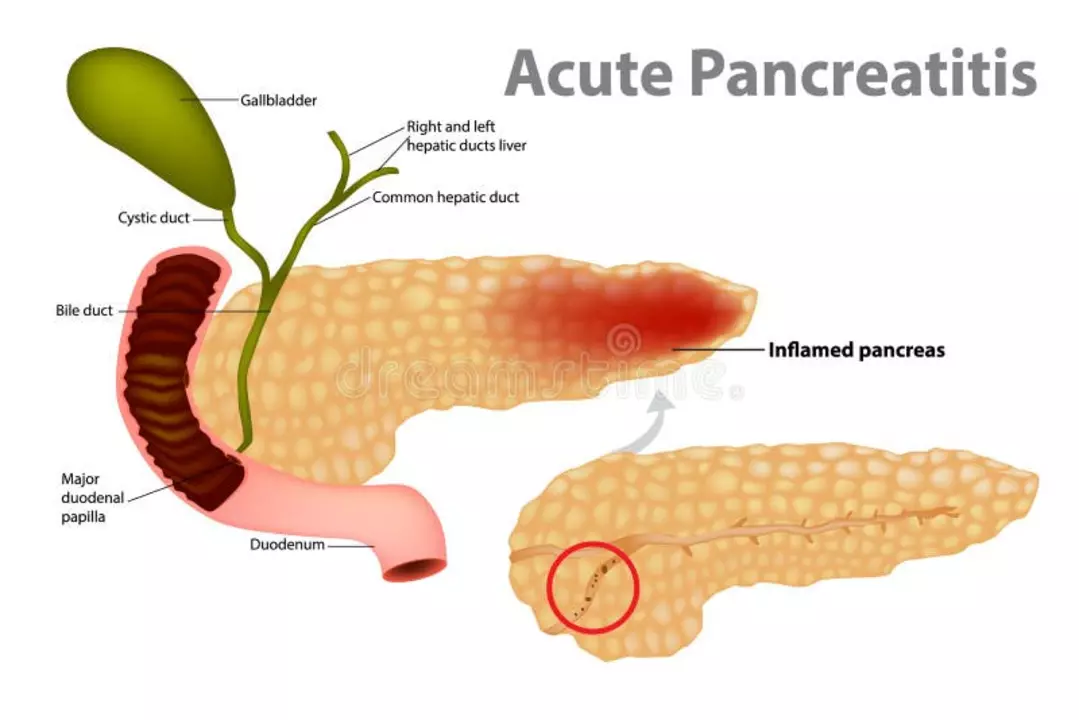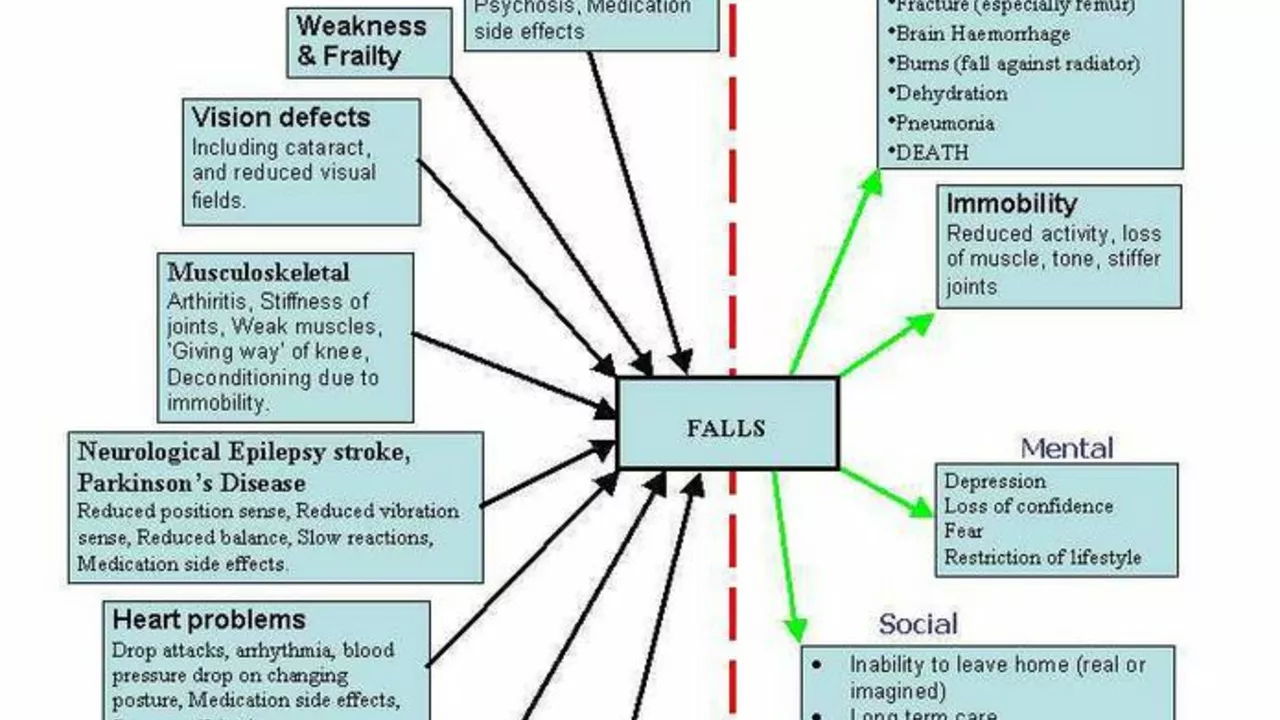Gallstones and Pancreatitis: Understanding the Connection

Understanding Gallstones and Their Formation
Gallstones are small, hard deposits that form in the gallbladder, a small, pear-shaped organ located beneath the liver. They are primarily made up of cholesterol or bilirubin, a waste product, and can range in size from a grain of sand to a golf ball. The formation of gallstones is a common condition that affects millions of people worldwide, and it can sometimes lead to serious complications if not addressed properly.
In order to understand the connection between gallstones and pancreatitis, it's essential to know how gallstones are formed. Gallstones occur when the substances in bile, such as cholesterol, bilirubin, and calcium, become too concentrated and begin to crystallize. This can happen due to various factors, including genetics, obesity, rapid weight loss, or certain medications. Once formed, gallstones can block the bile ducts, leading to pain and inflammation.
The Role of the Pancreas in Digestion
The pancreas is a vital organ located behind the stomach and plays a crucial role in digestion. It produces enzymes that help break down food in the small intestine and hormones like insulin, which regulates blood sugar levels. The pancreas and gallbladder are connected through a series of ducts, which allow bile and pancreatic enzymes to flow into the small intestine to aid in digestion.
When everything is functioning properly, the pancreas and gallbladder work in harmony to ensure optimal digestion. However, problems can arise when gallstones interfere with this process, leading to a condition called pancreatitis.
Understanding Pancreatitis and Its Causes
Pancreatitis is an inflammation of the pancreas, which can be either acute (sudden and severe) or chronic (occurring over time). It is a serious condition that can result in life-threatening complications if left untreated. There are various causes of pancreatitis, but one of the most common is gallstones.
Gallstones are responsible for up to 40% of acute pancreatitis cases. When a gallstone blocks the bile duct, it can also obstruct the flow of pancreatic enzymes, causing a backup of these enzymes in the pancreas. This backup can lead to the activation of digestive enzymes within the pancreas itself, causing inflammation and damage to the pancreatic tissue.
Symptoms of Gallstone-Induced Pancreatitis
If you have gallstones, it's essential to be aware of the symptoms of pancreatitis, as early recognition and treatment can significantly improve the prognosis. Some common symptoms of gallstone-induced pancreatitis include:
1. Severe upper abdominal pain that may radiate to the back
2. Nausea and vomiting
3. Fever
4. Rapid heart rate
5. Swollen and tender abdomen
If you experience any of these symptoms, it's crucial to seek medical attention immediately, as untreated pancreatitis can lead to serious complications.
Treatment Options for Gallstone-Related Pancreatitis
When it comes to treating gallstone-related pancreatitis, the main goals are to relieve pain, manage complications, and prevent recurrence. Treatment options may vary depending on the severity of the condition and the presence of complications, but some common approaches include:
1. Fasting: To give the pancreas time to heal, you may be required to stop eating and drinking for a short period.
2. Pain management: Pain-relieving medications may be prescribed to help alleviate discomfort.
3. Fluid therapy: Intravenous fluids may be administered to prevent dehydration and maintain electrolyte balance.
4. Nutritional support: Once the inflammation has subsided, a low-fat diet may be recommended to promote healing.
5. Gallstone removal: In some cases, removing the gallstones or even the entire gallbladder may be necessary to prevent recurrence.
Your healthcare provider will work with you to determine the best course of treatment based on your individual situation.
Preventing Gallstones and Pancreatitis
Prevention is always better than cure, and there are several lifestyle changes you can make to reduce your risk of developing gallstones and subsequent pancreatitis. Some preventive measures include:
1. Maintaining a healthy weight: Obesity is a significant risk factor for gallstones, so strive to maintain a healthy weight through a balanced diet and regular exercise.
2. Eating a low-fat, high-fiber diet: Consuming a diet rich in fruits, vegetables, whole grains, and lean proteins can help prevent gallstone formation.
3. Avoiding rapid weight loss: Losing weight too quickly can increase the risk of gallstones, so aim for a gradual, sustainable weight loss plan.
4. Staying hydrated: Drinking plenty of water can help prevent the formation of gallstones by keeping bile at the right consistency.
By being proactive about your health and making positive lifestyle changes, you can significantly reduce your risk of gallstones and pancreatitis, ensuring a healthier and happier future.


Jimmy Gammell
June 12, 2023 AT 12:34Hey there! Great rundown on how gallstones can mess with your pancreas – super helpful. Keep up the good work 😊
fred warner
June 15, 2023 AT 13:50This post really breaks down the link between gallstones and pancreatitis in a clear way. I especially appreciate the practical prevention tips; staying active and eating fiber is key to keeping those stones at bay.
Veronica Mayfair
June 18, 2023 AT 15:05Totally agree 🙌! The way you highlighted the symptoms makes it easier to spot trouble early – those upper‑abdominal pains really shouldn't be ignored. 🍎😊
Rahul Kr
June 21, 2023 AT 16:21👍 Good points. Staying hydrated is often overlooked but it really helps keep bile fluid.
Anthony Coppedge
June 24, 2023 AT 17:37Gallstone‑induced pancreatitis is a multifactorial condition that demands a comprehensive approach. First, understanding the pathophysiology helps clinicians anticipate complications. When a stone obstructs the cystic duct, pressure builds up in the biliary tree, leading to reflux of bile salts into the pancreatic duct. This reflux can prematurely activate digestive enzymes, which then autodigest the pancreatic tissue. The resulting inflammation manifests as severe epigastric pain radiating to the back, often accompanied by nausea and vomiting. Early laboratory markers such as elevated serum amylase and lipase assist in confirming the diagnosis. Imaging, particularly transabdominal ultrasound, can visualize stones and ductal dilation, while CT scans assess the extent of pancreatic injury. Management begins with aggressive fluid resuscitation to maintain perfusion and prevent hypovolemia. Analgesia should be titrated carefully, avoiding opioids that might mask worsening pain. Nutritional support is crucial; after a brief fasting period, low‑fat enteral nutrition is preferred over total parenteral nutrition. Endoscopic retrograde cholangiopancreatography (ERCP) with sphincterotomy is often employed to extract the offending stone and relieve obstruction. In cases where ERCP fails or the gallbladder is diseased, laparoscopic cholecystectomy provides definitive treatment. Long‑term follow‑up should monitor for chronic pancreatitis, which can develop after repeated inflammatory episodes. Lifestyle modifications, including gradual weight loss, a balanced diet, and regular exercise, markedly decrease recurrence risk. Ultimately, a multidisciplinary team-gastroenterologists, surgeons, dietitians, and primary care providers-ensures optimal outcomes for patients.
Joshua Logronio
June 27, 2023 AT 18:53Watch out for those stone‑related attacks, they’re no joke.
Nicholas Blackburn
June 30, 2023 AT 20:08Honestly, the article glosses over the severity of gallstone blockage; anyone reading this should know that delayed treatment can be fatal, not just a mild inconvenience.
Dave Barnes
July 3, 2023 AT 21:24Life is a bit like bile-when it gets too concentrated, it solidifies into obstacles we must navigate; gallstones teach us that balance is essential.
Kai Röder
July 6, 2023 AT 22:40While the information is solid, consider adding more on patient support resources; sharing community groups can make a big difference for those coping with pancreatitis.
Brandi Thompson
July 9, 2023 AT 23:56It's baffling how many people disregard the warning signs of gallstone‑induced pancreatitis, especially when the symptoms are so clearly laid out in the article, yet the public health messaging remains woefully inadequate, leading to unnecessary suffering and increased healthcare costs
Chip Hutchison
July 13, 2023 AT 01:12Great summary! Remember that diet recommendations can vary across cultures, so adapting low‑fat meals to fit traditional cuisines helps many stay on track.
Emily Moody
July 16, 2023 AT 02:27Our nation’s medical community must prioritize rapid ERCP access; without cutting‑edge intervention, gallstone‑related pancreatitis will continue to cripple productivity.
Prateek Kohli
July 19, 2023 AT 03:43Thanks for the thorough explanation 😊 I think sharing personal stories alongside these facts can further empower readers.
Noah Seidman
July 22, 2023 AT 04:59One could argue that focusing solely on gallstones neglects other dietary toxins that equally threaten pancreatic health; a holistic view is morally imperative.
Anastasia Petryankina
July 25, 2023 AT 06:15Ah, yet another primer on common medical knowledge-truly groundbreaking for the layperson.
Tim Ferguson
July 28, 2023 AT 07:30Sometimes the simplest advice, like drinking water, gets lost amid medical jargon.
Noah Cokelaere
July 31, 2023 AT 08:46Interesting read; it's amazing how the body can turn a tiny stone into a full‑blown crisis.
Ashley Helton
August 3, 2023 AT 10:02Nice work-your checklist makes it easier to remember what not to ignore.
Brian Jones
August 6, 2023 AT 11:18Well done!; the blend of science and practical steps really hits the mark; keep it up!
Carlise Pretorius
August 9, 2023 AT 12:34good info dont forget to stay hydrated and watch your diet